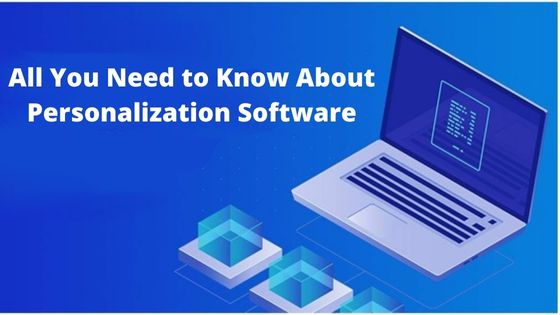With an increasing share of marketing resources going into digital personalization initiatives each year, content personalization in marketing is more popular than ever. For marketers, personalization appears to tick all the right boxes: it boosts click-through rates and conversions, fosters consumer trust and loyalty, and encourages visitors to stay on a website longer. However, despite all its potential, personalization may be quite difficult. It might take a long time to build and deploy personalization’s across several channels. Furthermore, despite the abundance of personalization tools, almost three out of every four marketers believe that technology makes personalization more challenging.

What exactly is personalization software?
Personalization software is any program that enables your eCommerce website to present tailored content in response to the preferences and needs of your clients. This program may be an email marketing program, an extension, or a plugin. Such customization software’s only goal is to use a product suggestion algorithm to raise various eCommerce websites’ metrics like revenue, conversion rate, loyalty, and average order value.
Do you need personalization software?
Every customer who interacts with your business has unique needs, so you must live up to their high expectations. Customers want a business that genuinely knows their requirements, and if they believe you’re using a one-size-fits-all marketing strategy, they won’t be scared to seek elsewhere. Integrating customization tools into the customer experience is a smart strategy to stop this potential attrition. In a 2017 Accenture analysis, researchers discovered that 44% of customers were dissatisfied with businesses that didn’t offer individualized shopping experiences. In the previous year, 41% of customers changed brands because of “poor customization.” Personalization software not only lowers customer turnover but also raises customer happiness, which often generates more money for your company. The prediction is that by 2023, personalization software would boost the income of digital firms by 15% by properly analyzing client intent.
Why is web personalization software such a challenge?
Many marketers still struggle to create effective tailored experiences despite the significant resources and tools allocated to personalization. There are several causes for this:
- Personalization software depends on data, and all too frequently, the data it requires is scattered across several systems and departments or locked up in silos.
- Due to outdated infrastructure and contract lock-in, releasing segregated information necessitates complicated, frequently expensive connections.
- It is difficult for many customization software solutions to become widely used because of how difficult they are to use. Additionally, customization initiatives are prone to stall and pricey personalization software is easily shelved when they demand developer resources for deployment and upkeep.
- Few marketing teams have taken the time to clearly state their vision, pinpoint their objectives, and set out a personalization strategy. Any attempts to start a personalization initiative without taking these first steps are likely to fail.
Personalization software depends on data, and all too frequently, the data it requires is scattered across several systems and departments or locked up in silos. Due to outdated infrastructure and contract lock-in, releasing segregated information necessitates complicated, frequently expensive connections. It is difficult for many customization software solutions to become widely used because of how difficult they are to use. Additionally, customization initiatives are prone to stall and pricey personalization software is easily shelved when they demand developer resources for deployment and upkeep. Few marketing teams have taken the time to clearly state their vision, pinpoint their objectives, and set out a personalization strategy.
